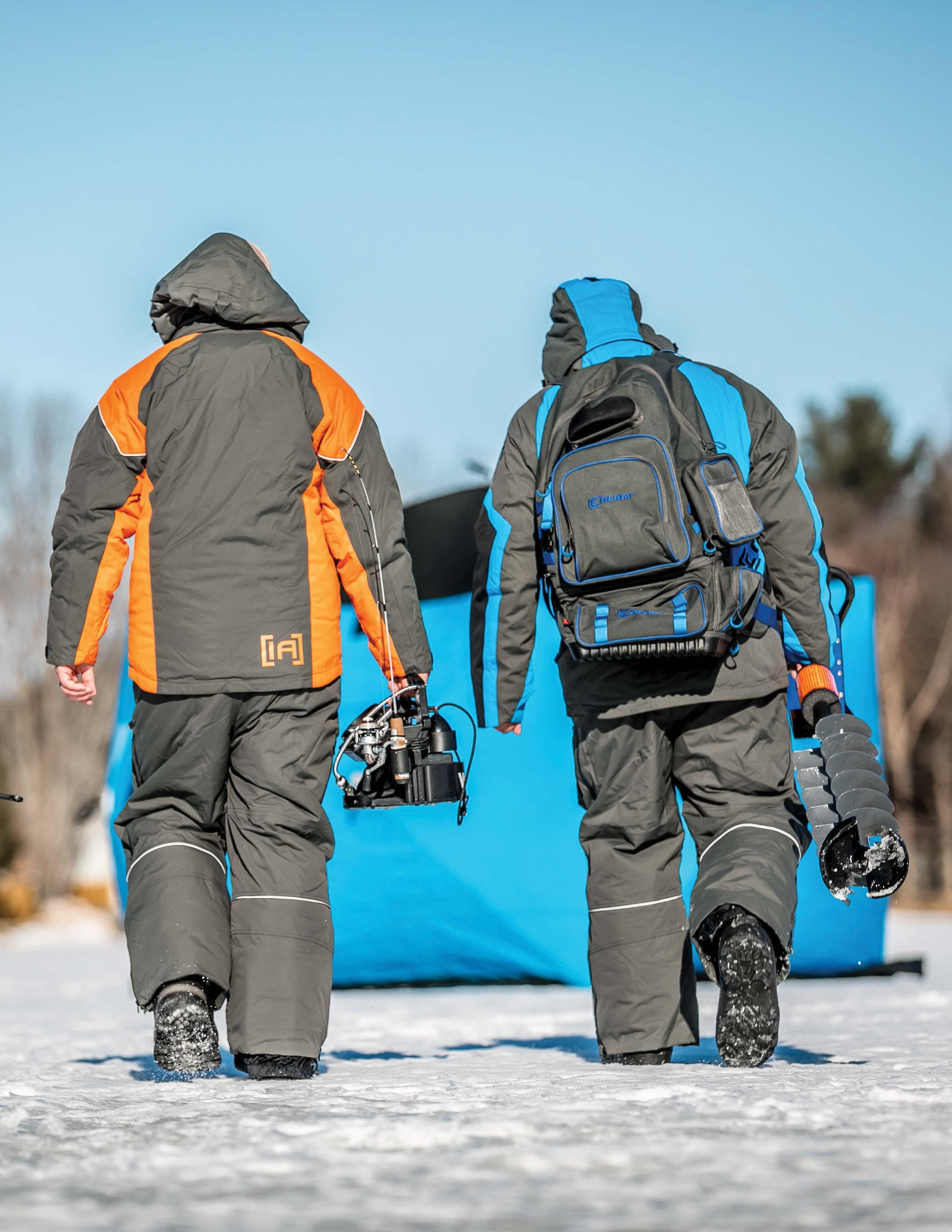


















Bring out the best in your fresh catch with Shore Lunch breading. Try our soup mixes, batter and other comfort food favorites too!



NOW
Visit us online for recipes, products and more at ShoreLunch.com





As an ice angler, it’s very important to keep an open mind as you journey through another full season on the hard top. Conditions can change day to day, sometimes hour to hour, lake to lake and therefore, so must we change or adapt. Here are a few tips to keep in mind when it comes to navigating through some common situations, we here in the ice fishing community are all faced with every year when it comes time to start punching holes.
Clear bodies of water can be very tricky to fish. Not only can the fish get a good look at your bait but in most cases, they can also detect your presence as well. In order to stay consistent and produce positive results, here are a few tips I live by to keep fish coming through the hole. Approach your targets in stealth mode under the cover of darkness. Clear water lakes that get moderate fishing pressure during the day can almost not be worth fishing. Combine
the noise from the abundance of anglers, the fact that the fish are being bombarded with several baits, and the fact that they have a clear line of sight and feel, can spook
them greatly...I’ve seen it play out on camera. Approaching them at night or during pre-dawn hours gives us our best chance to seal the deal due to the fact most anglers will have pulled off the ice, or are still in their sleep attire, along with this being the time frame we can get some heavy bug movement taking place in the water column. This will be our best chance to present a quiet, stealthy and natural presentation to the fish below as they feel more comfortable in their surroundings and they will be feeding on the various bugs floating in the water column. Now, if you’re forced to fish a clear body of water during the day...my advice would be to fish well away from the crowds and find some deeper water where the fish will be less spooked. Also, a big key for me is to downsize my presentation. Often the winning presentation is a single spike or waxie offered on a 2 or 3mm natural color patterned tungsten with a #14 or #16 hook. I’ve had some of my best outings taking this approach.



If you reside up in the Northern parts of the country where most ice fishing is done, you’re bound to come across tannic or “tea stained” water. These are my absolute favorite bodies of water to fish! Why? Well for one, darker stained water will afford you the ability to sleep in a little...I like sleep. Fish roaming in these darker waters tend to be on a “Banker’s Bite” schedule. You’ll often find the hot bite taking place from 11am to 3pm which can often be the most comfortable part of the day for us anglers out in the elements. Approaching these waters before or during sunrise and at dusk into the night can often give the impression of a dead sea due once again to visibility and comfort. When the water is dark and the conditions above are dark, it can cause the fish to be lethargic and unwilling to eat or chase your presentation. Snow cover can increase this effect as you start taking away plant life and menu options floating around for our finned friends. Simply put...sleep in, eat a nice warm breakfast and approach
these darker stained waters when the sun is out and piercing through into the world below creating visibility and signs of life. Your catch rates will be far greater during these peak hours on these types of water systems. Some of the newer UV and glow color patterned baits are top choices for these conditions.
As we start to approach February, some of our “honey holes” located on man-made lakes or reservoirs tend to start fizzling out a bit. Why is this? Well, once again numerous factors are at play here. By now, most areas have a decent amount of snow cover, which in turn blocks out a great deal of any burst of rare February sunshine we might be lucky enough to see. This can play a big part in photosynthesis...in simple terms: lack of sunlight causes most freshwater plant life to die off, which can then cause a lack of oxygen in the water, especially lakes and reservoirs that have very little current. As you would expect, if you have little
remaining plant life, the underwater food chain also takes a major hit. Most importantly, the lack of quality h2o remaining below the ice really slows down the metabolism of a fish and creates a difficult angling situation as most fish can seem to have gone dormant. It’s important to remember that these fish will still have feeding windows, but they may not be as prevalent as during early and late ice. During these times, my focus turns to fishing flowages, river backwaters or natural lakes containing freshwater springs. Why? One word...Current. Current equals oxygen, oxygen equals a greater chance of active life (plants, aquatic insects, baitfish etc.). Thus, the circle of underwater life remains healthier than it would be in a body of water that is lacking current. The fish seem to have a little more fire in their fins when there is some type of flowing water and a thriving zoo plankton population. The month of February can be lights out hot, just like December and late March if you adapt and put yourself in the right situation... on the right bodies of water.
 By: Jason Mitchell
By: Jason Mitchell
Bluegills are often abundant and easy to target. Perfect for beginning ice anglers and highly desired by seasoned ice anglers. The ultimate fish species for introducing somebody new to the wonder of ice fishing. Jason Mitchell offers some basics for getting started on the ice this winter.

Regardless of whether you do a lot of ice fishing or are completely new to ice fishing… bluegills are seemingly designed for entertaining ice anglers. Abundant, relatively easy to find and great on the table, bluegills are one of the most popular species to target for many ice anglers in many states. If you enjoy eating a fresh meal of fish, chances are that bluegill are high on your list. If you hope to introduce somebody new to ice fishing… bluegills are perfect. As common and easy bluegill can be to find and target, the irony is that big bluegills are as difficult to find and catch as any other trophy fish. This is what makes bluegill so infatuating and addicting. Bluegill are a fish that can start the passion and are also a fish that experienced anglers continue to target. Ice anglers simply love bluegills.

From the emails we receive. From the messages sent to us on social media. What is apparent in the world of Covid 19 is the simple fact that more people are fishing today and
more people want to learn about fishing. With so many different activities compromised or cancelled outright, there are many people who once fished and now want to get back to fishing. There are also many
AS COMMON AND EASY BLUEGILL CAN BE TO FIND AND TARGET, THE IRONY IS THAT BIG BLUEGILLS ARE AS DIFFICULT TO FIND AND CATCH AS ANY OTHER TROPHY FISH. THIS IS WHAT MAKES BLUEGILL SO INFATUATING AND ADDICTING.
people who have never fished and want to start. There are many people who want to take their kids or families out fishing. Fishing is good for people and as a fishing community, we embrace the new anglers with open arms.
More people interested in fishing is good for fishing. Good for the industry and ultimately good for the resource. More people fishing means more funding for conservation and access. More people fishing means more interest in policy and legislation that can ultimately affect everything from water quality to public use priorities. The beauty of the North American wildlife management model is that the water and fish are public domain managed for the public. The land might indeed be owned by private individuals but if you have public access to get on the water or ice, that water itself is public domain accessible by anybody who has the correct license. Note as well that resident fishing licenses in most states are amazingly cheap when you look at the number of days you can fish and factor what other recreation costs. In most states, kids can simply fish for free. There is also a critical mass needed for influencing the policy that ultimately affects our fishing opportunities. We need more anglers who care about our resources.

Develop a passion for fishing. Appreciate and respect the resource so you become an ambassador of this wonderful recreation. Give more than you take and learn sound management practices like selective harvest. Don’t feel like you have to keep a limit of fish just because it is legal but keep simply what you need. Care enough to pick up litter that you see.
If you are just starting, fishing can seem technical and even overly complicated. Some people might be intimidated because they might not have a lot of equipment. Don’t be intimidated. At the end of the day, a bluegill has the brain the size of a peanut. What makes fishing so much fun for so many people is that anybody can get good at fishing or experience some levels of success. In fact, some of the best ice anglers don’t necessarily have a lot of equipment… they just know what to do and where to do it.

Too accelerate the learning curve, do some research online whenever possible. If you don’t have a lot of
Be careful picking your locations and use light presentations to be successful on the ice this winter. High percentage locations include the outside edge of good weed lines. Choose a light action rod with either a spring bobber or noodle tip. Drop down to two-pound test and use small compact jigs.

equipment, choose lakes that have high densities of fish and look for lakes that have relatively clear water. Why? Because clear water allows you to sight fish where you can often literally watch the fish. Some of the absolute best winter bluegill anglers I have ever seen cut their teeth by sight fishing. At early ice before there is a lot of snow on the ice, look for weeds frozen into the ice. Simply walk out to the edge where the weeds dissipate or disappear so that you are on the outside edge of the weed line. That edge is a high percentage starting point. Many new anglers might start out with a hand auger because of price and a hand auger can be particularly useful at early ice but electric augers in particular are so easy to use and lightweight that many more women are embracing ice fishing. You don’t need to be a lumberjack to drill a hole with today’s equipment.
To sight fish effectively, a shelter is useful for blocking the light so you can see down the hole. If you are taking a few kids along, hub shelters

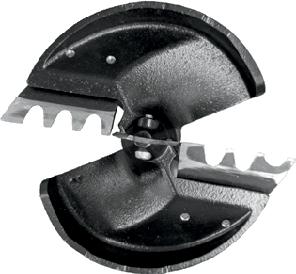

are affordable and very functional. Check out the C Series Hub Shelters from Clam Outdoors. They offer a lot of room and protect you from the elements. Being able to stare down the hole and watch fish is simply addicting. On many lakes, you will not only see bluegill but bass, pike, perch or crappie depending on the lake. On most lakes, fish will hang around this outside edge of a prominent weed line for a good portion of the winter. These spots are easy to find.

To also help with your location picking, simply upload one of the mapping apps onto your phone. Navionics is the cheapest and has the most lakes. The maps are often not as detailed as some maps but do provide the basic structure and ledges. Most good areas will simply provide an edge where a shallower hump or point drops off into deeper water. The Lakemaster app has fewer lakes but the maps are more detailed and expensive.

Once you get started, you will definitely want a flasher for seeing your lure and seeing the fish but you can get started sight fishing and add the flasher as you continue to acquire equipment. Best bang for the buck in my mind is a Vexilar FL-18 on a Genz Pack. This unit will do everything that you need. The FL-8 is also a great unit that will do everything the FL-18 will do without the zoom feature which is fine if you only plan to target panfish.
Picking easy high percentage locations is crucial because you must be over the top of fish in



order to catch them but the next most important component is your presentation. Rods don’t have to be expensive to catch fish. Choose a light action rod with a spring bobber or noodle tip if the goal is panfish like bluegills. Use a lighter line like twopound CPT Mono and use small jigs like a CPT Drop Jig in a size 8. The CPT Drop Jigs are tungsten which makes them a little more expensive than traditional lead jigs but the tungsten will be much easier to feel on the rod tip. Tip the jig with a waxworm. Use a palomer knot which can be learned from simply searching on YouTube. Make sure the knot is straight so the jig hangs balanced and horizontal.
Work the jig slowly down to fish and try to remain slightly above the fish if you can see the fish. The jigging movements don’t have to be big or drastic. Simply quiver the jig
and pause. Quiver and pause until the fish comes up and eats. Small floats can also be used which can be useful especially for kids. If the spring bobber drops or the float moves, set the hook.
For simply learning the basics and especially for introducing kids to the magic of ice fishing, simply getting over the top of a big school of bluegill is perfect. The fish don’t have to be the biggest. The goal starting out is to simply catch some fish and check an X next to the win column. Get that experience. As you move along in your respective ice fishing career, you may want to target other species or target bigger fish but you must lay down the foundation. You have to generate the infatuation and interest. What is most exciting to me is the number of women for example that are planning on taking their kids ice fishing. The number of
people who might not fit the mold as your prototypical ice angler. That is exciting because I know how great fishing is for people. There would be fewer problems in the world if more people took their kids out fishing. Enjoy the journey!



The most convenient way to ensure your tailbone won’t meet that hellaciously hard ice, just strap the Apex Ice Cleat on, grab your auger and start punching holes knowing there’s no ice condition these babies can’t sink their teeth into.










20 MULTI-DIRECTIONAL, SAW-TOOTH STAINLESS CLEATS FOR THE







AND QUICK MOBILITY.







As I begin my preparations for my annual trip up to Baudette MN and Lake Of The Woods, I started thinking about what makes Lake Of The Woods (LOTW) a great ice destination for walleyes. The obvious first factor is fish! There are literally thousands and thousands of fish, sauger and walleye, making LOTW a high target environment.
Now, are all the fish trophies? No, but with an abundance of small fish, plenty of good eating size fish and the excellent potential, every day, to catch a 26 to 30 inch trophy - that is more than enough potential to keep the anticipation high every time a mark cruises onto the sonar.
North of Baudette the Rainy River enters LOTW at Wheelers Point. There are many resorts in that area. The one I’ve stayed at for years is Adrians. I use to fish tournaments against Brian Ney – he is an excellent angler. Brian and his brother Corey (and the rest of their family) run the resort and are great resources for bait, fishing information, guided trips, etc. Although one of the original resorts, Adrians’ has gone through many renovations the last couple of years and now has some of the nicest lodging. It still has a great lodge/ restaurant and has two of the best/ fastest fish cleaning young ladies I’ve ever witnessed!
I choose this area because, in the
fall, shiners come into the Rainy River by the millions – they are closely followed by walleyes. This fall migration also draws many walleyes into Four Mile Bay and the Basin area just outside of Pine Island (a barrier island). Because LOTW is so far north it also is one of the first larger lakes to get good ice.
Usually by mid-December there is safe ice to traverse with snowmobiles and ATV’s. There is an Ice Road across Four Mile Bay (maintained and managed by Adrians Resort) that takes you out over Pine Island to the main fishing area. Note, there are vehicle weight limits so trucks and wheel houses will have to wait until the road is thick enough – check with Adrians for latest conditions. Once you cross over Pine Island you will see literally a city of resort shacks. Plowed “roads” will lead you out onto the sea of brightly colored shacks. These shacks are rented by the resorts (each resort has a color scheme). They are heated, come with bait and are moved often to keep clients on fish. The resorts provide transportation to get you out to your shack for a day of fishing. This is a really nice Turn-Key option to experience LOTW ice fishing.
Personally, I like the versatility of staying mobile. Give me my snowmobile pulling my Clam X200 Portable shelter and let me explore. Most of the water being fished is a basin area. It slowly tapers from shore. The walleyes can
be in 10 feet, 30 feet or any depth in between. There is no real structure or “spots” to fish – it is basically a flat area. I think the walleye slowly mill around looking for food. Often if you can find a school you will have good action for the day (or even days) in the same area.
As the season progresses past first ice, you will notice the resorts “leap frogging” rows of their shallower shacks out to deeper water. One thing I always check out is the outskirts of the resort shacks (typically deeper). Sometimes staying one step ahead of them can produce. I also look for areas inside the pack with less activity. At times I cross some rough ice to get to a patch of smooth ice that has not been fished. Also remember, there are times when the numbers of fish move out deeper, but the big girls stay in shallower or move shallower in low light conditions. By staying mobile – I can check out all the situations.
One note - early ice conditions can be rough. If the wind blows hard when the ice is forming, it often pushes up “shoves” and shards of ice. Make sure if you are using a portable shack it has a tough tub. Often some of the unfished areas require a rough pull through ice fields in frigid conditions – you don’t want to crack your tub. I’ve used the Clam X200, the Clam Voyager and the Clam XL Thermal (one man) in these conditions and all have held up great. I recommend using the Clam Pro Series Tow Hitch on all of these shacks – toughest hitch system out there!
One of the big advantages of LOTW is that it is stained water. That means that the fish can bite all day. Unlike most clear lakes, where the bite is only dusk or dawn, at LOTW the fish stay much more active – even



during midday. I would say seeing a fish every 10 minutes on the fish finder is not uncommon – now getting them all to bite – well that’s what makes it fishing.
I use a variety of lures on LOTW. Jigging spoons, glide baits and lipless cranks are what ends up on the business end of jigging rod. Gold and red are always great choices for colors (glow red is particularly good in low light). One little trick on jigging the basin areas of LOTW is to pound the bottom frequently. I think the sound of the pound and the puff of debris it creates can draw fish to your presentation. Once you see them,
ONE OF THE BIG ADVANTAGES OF LOTW IS THAT IT IS STAINED WATER. THAT MEANS THAT THE FISH CAN BITE ALL DAY. UNLIKE MOST CLEAR LAKES, WHERE THE BITE IS ONLY DUSK OR DAWN, AT LOTW THE FISH STAY MUCH MORE ACTIVE
and a live shiner. 1/8 to ¼ ounce white, pink and gold jigs set in a second hole in your shack about 2 feet off the bottom catch a lot of fish. Often the action of the lure on your jigging rod will draw fish in –the enticing movement of a live minnow a couple feet away will finish them off.
One final option is to fish for suspended fish. Similar to a dead rod in the shack, I typically use a jig and minnow. But like in summer –basin fish will often cruise around suspended half way up the water column (or even higher). For these fish, I like to set up a JT Outdoors Hot Box away from my shack. Suspended fish are spooky, so sounds on the ice in the shack can push them down. The Hot Box keeps the hole clear of ice and allows me to instantly set the hook and fight the fish with a spinning reel – thereby landing more fish than say a typical Tip-up.
Lake of the Woods is a premier early season ice destination. Great facilities, lots of fish, chance for a trophy – a great place to get – The Next Bite!

Wherever Your Next Adventure Takes You, CanCooker Has You Covered. Spend Less Time Cooking and More Time Doing What You Love To Do!







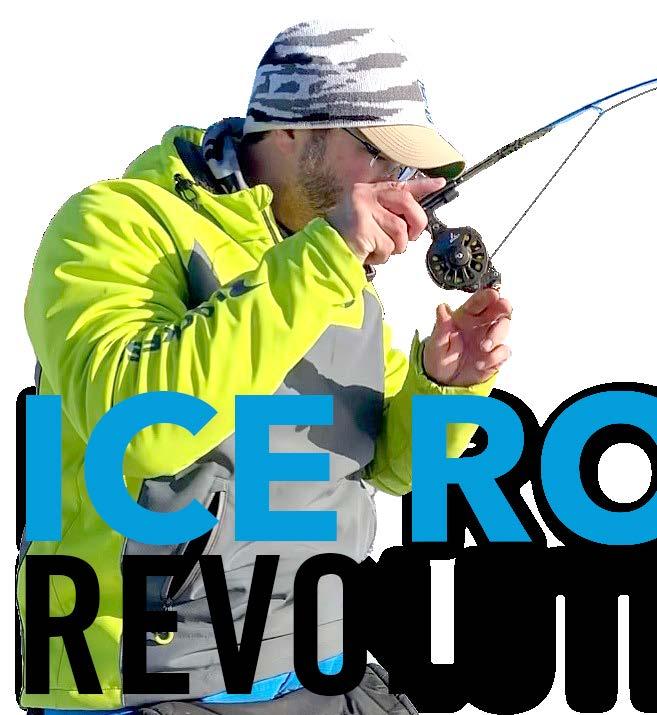
Iremember years ago ice fishing and not giving a hoot about the rod I was using, it was just the means in which my line, hook and bait could easily get to where the fish were. While I wasn’t quiet in the cane pole era, I may as well have been, because I just wasn’t thinking of any other purpose for it.
Now ice fishing rods come in many varieties depending on what action you want. Everything from a 24” light action to a 40” heavy action and everything in between. Light action rods will have a more flexible tip that can detect a finicky biting fish, and a heavy action rod has a sturdy backbone for a good hook set. If you want the best of both you can place a spring bobber on the tip of your rod.

KEEP IN MIND A GOOD ROD THAT BENDS IS ALWAYS BETTER FOR KEEPING THAT FISH ON AND GETTING THEM UP THE HOLE. THIS ALLOWS FOR MOMENTS WHEN THE FISH GIVES SLACK IN THE LINE TO THEN STILL HAVE A MOMENT TO REGAIN CONTROL AND PULL THEM UP THE HOLE.

Checking your drag should always be done before you put your line in the water, or first thing when you do. There’s nothing worse than losing your jig as well as the fish, and there’s nothing more fun than landing a way bigger fish than your line test said it could handle. By having your drag set right this is totally possible and so much fun! You want to be able to set the hook and allow the fish to take a little line if they start to put on the breaks. It sounds funny a fish stopping but it happens, they know just how to make it feel like they literally put on the brakes. Don’t horse them in when you have that situation. It’s called a standoff. They would love nothing better than for you to pull as hard as you can and break the line setting them free. When you find yourself in a standoff, wait until they make the first move then pull your tip up and reel down and repeat. Sometimes when you’re in the heat of the moment you’ll forget this technique momentarily. I certainly have, but the will to land the fish reminds me to relax, slow down and feel what the fish is doing. Only react to the fish’s actions when in a standoff situation. Never give the fish any slack!
This is even more sensitive, making the bite detection even easier. Pan fish like Crappie, blue gill and perch are better for a light action rod. Whereas walleye, bass, northern pike and lake trout would be better on a medium or heavy action rod. Keep in mind a good rod that bends is always better for keeping that fish on and getting them up the hole. This allows for moments when the fish gives slack in the line to then still have a moment to regain control and pull them up the hole. You never want slack in the line because the fish will have the opportunity to get the upper hand on you and the hook can more easily come out of his mouth. You always want that line tight when reeling up a fish.
Remember light action rod, smaller fish and medium to heavy rod, bigger fish. It’s nice to have several rods rigged up at a time and if the bite is hot switch them out just to get a feel for what that rod has to offer. Sometimes I like a good hook set on a big bluegill. While any rod can catch a hungry fish these special action rods are all about fine tuning your angling experience.
















It’s been said more than a lot of times that “fishing lures aren’t made to catch fish, they’re made to catch fishermen.” When I was first getting into the fishing business I thought that was a pretty accurate concept. I learned quickly that lures that didn’t catch fish didn’t stay on the market very long. Fishing lure manufacturers truly want anglers to catch fish on the baits that those manufacturers make. If you catch fish on a particular bait, chances are you’ll buy more of them. There’s an unbelievable amount of thought, time, effort, and money that goes into getting a new lure into the hands of anglers. First, there needs to be an idea for a new lure. Then, a fishing tackle manufacturer needs to determine if there’s a need for that lure. Manufacturing, packaging, and marketing needs to be figured out. Then, and most importantly, there needs to be a
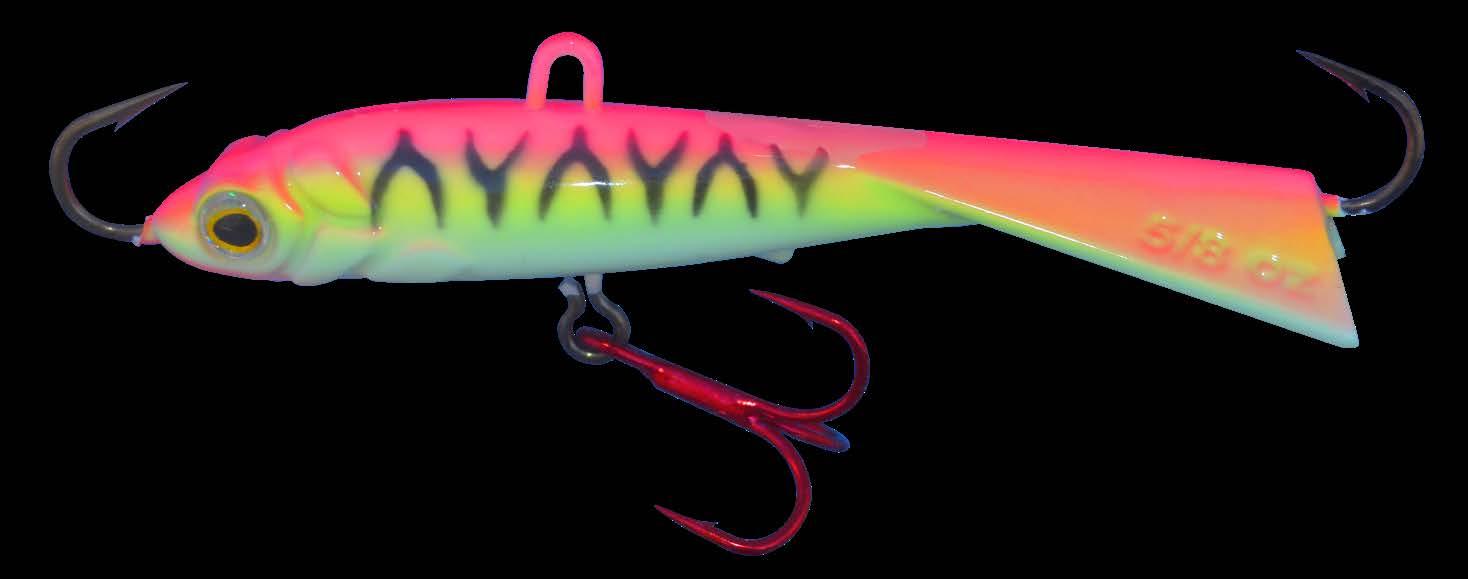
person that can create that lure. John Crane is one of those people. I’ve known and fished with J.C. many times in the past twenty plus years, for everything from bass to walleyes to panfish. From a boat and through the ice. I and many, many other anglers have caught many, many fish on lures designed by J.C.
When I first started fishing with J.C., I found out very quickly that he was an outstanding fisherman. Not just good: Outstanding! Not long after, I noticed that he was constantly looking very closely at baits. He watched how they performed in the water. He examined them after a fish was caught. I didn’t know J.C. very well then and didn’t understand why he examined lures so closely. I learned that he was always looking for a way to make an already good lure even better.
A while back, and keep in mind that I said “a while”, J.C. started working on a new bait. He wanted to create a lure that was productive both through the ice and in open water. There were baits like this on the market, but J.C. thought he could “make a better mousetrap” or in this case, “a better fish-catcher.”
J.C. lives in northern Minnesota and fishes through the ice a lot. He’d been using glide-style baits with lots of success. But the baits that he was using had plastic fins that broke every now and then, rendering them useless. Fins sometimes broke when a fish with the bait in its mouth was flopping on the ice. J.C. also pounded the bottom with these baits to attract walleyes and perch, and when the baits were pounded on rocks, again, sometimes the fins broke. Not a lot, but enough to make J.C. think
there must be a better way. He was determined to find that better way.
J.C. tried a lot of different things. He worked on lure shape, material, hooks, anything that he thought might work better, he tried. By his own admission, he failed a lot. That’s the way it works when anyone is designing something new. Finally, he hit on some combinations that were game-changers. He learned that Zinc Alloy is an outstanding material for a lure of this design. It’s durable, has a fish attracting sound when it’s pounded on the bottom, and it’s friendly to the environment. Best of all, the fish liked it.
He also discovered that it worked best to make the fin part of the body. Instead of a plastic fin and a lead body, this bait is a one-piece bait. Again, much more durable.

J.C. determined that an oversized red treble hook attracted more biters and resulted in a better hooking ratio. A little detail that creates bigger catches.

The final result of J.C.’s efforts is arriving for the first time in fishing
tackle stores right now. It’s called a Tikka Mino. I don’t know what Tikka is, but I’m confident that if J.C. approved it, it’s a fish-catcher. And that’s the deal, a lure, if it’s going to be in a lure manufacturers line very long, has to do more than catch fishermen. It has to catch fish.


Now, remember a bit earlier when I said that “a while back” J.C. started working on this new lure? “A while back” was 9 years ago.
To see new and old episodes of Fishing the Midwest television, fishing articles and fishing videos, go to fishingthemidwest.com








W hen I was a young boy I had a famous angler once tell me, “Jeff, the fish are always biting somewhere on the lake!” This was after I made the excuse, “The fish just wouldn’t bite!” It wasn’t years until I figured out how true it was there were always fish biting somewhere on the lake. So the formula is simple, “If you’re not catching fish then make move!”

Well I have to admit there was a time I would just settle in one location, say they will bite and went home without any fish in the bucket. Moving wasn’t really an option because I would get comfortable in the one spot and not want to move. Why wasn’t it easy to move? Well with all the equipment I had including an ice auger, graph, lantern, fishing rods and not too mention it’s freezing out I just didn’t want to. That was the key to me not catching fish; I didn’t want to move, because it was a pain in the rear end.
My success rate has increased as mobility has become much easier. Now more then ever, with the endless options of portable shelters, mobility is not that pain in the rear and is easy as 1-2-3. Now of course the ability to move isn’t a sure bet
your going to catch more fish but it is a key element to your success.
So we packed all the gear into my Clam Fish Trap and away we went in search of some walleyes. We planned to fish on a lake that I have never had been on. This particularly lake was loaded with structure including, underwater points, rock humps, and several long expansive weed flats. Those were the three main types of structure we planned to fish. There was no shortage in structure but this means more spots for those old white tips to hang out, so mobility was key.
When fishing a new body of water

I usually key in on structure close to deep water access. We started off fishing the inside turns on the long expansive weed flats. Using my GPS
with map chip made it easy to look at a map, find a spot, and drive to it. Simple! We drilled our holes and started to fish. We keyed in on the deep edges directly off the weeds. We fished several locations on these weed flat with no bites. So on to the next type of structure.
Spot two was the long underwater points. We picked two of the largest points within this body of water. Starting on the inside turn we worked deep and shallow all the out to the tips of the points. We ended up catching some small perch and two small walleyes. Not the bites we were looking for.
We looked to the isolated structure being the rock humps. We moved from rock hump to rock hump and found feeding walleyes, but not all of the rock humps held
MY SUCCESS RATE HAS INCREASED AS MOBILITY HAS BECOME MUCH EASIER. NOW MORE THEN EVER, WITH THE ENDLESS OPTIONS OF PORTABLE SHELTERS, MOBILITY IS NOT THAT PAIN IN THE REAR AND IS EASY AS 1-2-3.
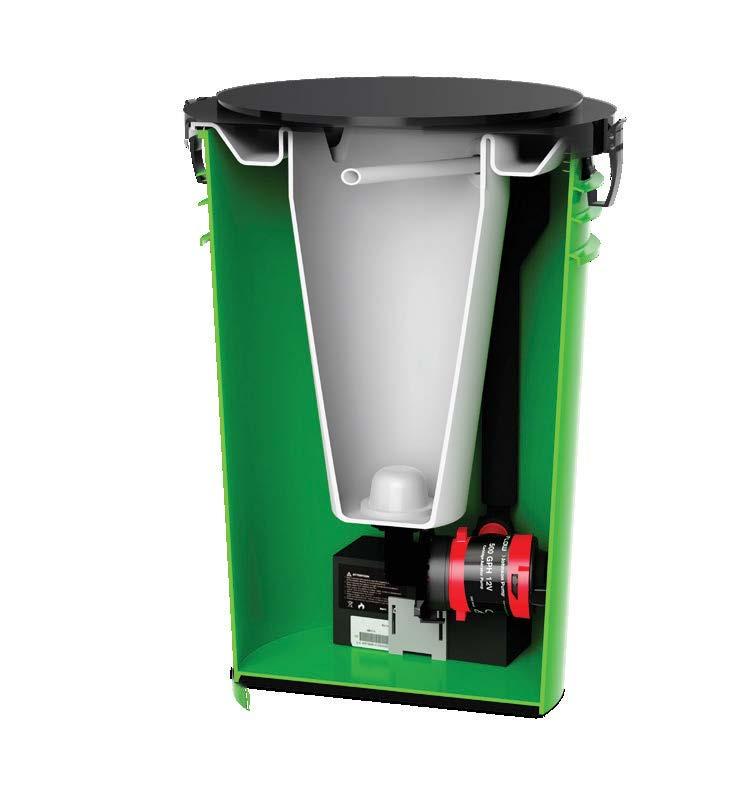
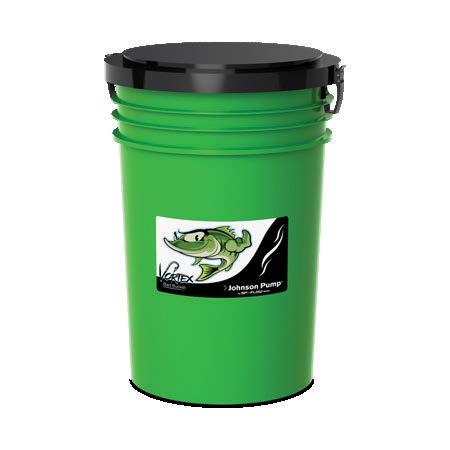
Domed Stainless Steel Strainer for Easy Cleaning & Bait Protection
Rechargeable 12V DC Battery & Bait Well Kit with On/Off Switch
fish. It was the rock humps that were located close to the expansive weed flats I mentioned earlier. So we had a pattern. We bounced from rock hump to rock hump catching the active walleyes and then moving on. We even went back to several of the same rock humps through out the day catching fish each time we pulled up.
The ease of moving was key to our success this day. There is no secret when it came to the three locations but it was our willingness to be mobile which is accredited to our success. This method has proving to my success for over 20 years!
In 1980 Dave Genz built the first Fish Trap and since then the game of ice fishing mobility has been revolutionized. 1997 Ice Team became the world’s largest ice fishing organization, in 2006 the Fish Trap-X series of ice shelters debut
as “the best ice fishing shelters ever built” and 2009 Clam introduces 13 new models of shelters. And, currently there is an endless amount of shelters to fit your mobility and fishing needs.
So now with so many ice-fishing shelters available through Clam Outdoors which one is right for you?
There are two main types of houses; the “Fish Trap” style of houses and the “Pop up/Cabin” style.
The “Fish Trap” style is the ultimate in fishing mobility. All of the “Fish Trap” styles give you the option to tow the shelter by hand or behind a snowmobile or fourwheeler with all of the necessary equipment you need.
The other option is to go with a pop up/cabin type shelter, which is a perfect option for the angler that is looking for a shelter that is
lightweight, compact, and roomy so you can fit the whole family.
So with all of these option available mobility is no longer an issue and gives you the ability to move to find the active biting fish!
If your goal is truly to go out and put fish on the ice the ability to move efficiently is key to success. This winter hone your system and get mobile for the win!

Jeff “Jiggy” Andersen YouTube: Jeff Andersen Fishing
Comfortable Foam Seat Easily Converts to Summer Use with Slow Release Ice Trough to Keep Water Cool By: Jason Mitchell
By: Jason Mitchell
On so many natural lakes
(particularly where there is good water visibility that
typically creates lush stands of aquatic vegetation) crappie location at early ice is all about finding the best weeds. Tall green weeds will typically hold crappies at early ice and these locations can produce fish well into the winter. Finding crappie is often all about finding the best weeds. The weed line can vary from lake to lake but lakes that have good stands of weeds out to fourteen feet of water often produce a definite pattern. On some lakes, milfoil might be the prominent tall weed. Other lakes see stands of narrow leaf pondweeds and cabbage. Coontail can be excellent as well especially on sharp deep breaks. Typically, these weed locations can be big, sometimes stretching a hundred yards or more
but there will be sweet spots within the weeds. Not all the weeds will be as dense for example or as tall. Find the spot on the spot where the weeds are densest and tallest and these spots will often recharge with fish continuously.
Finding the big spot can be relatively easy but it pays to spend time dialing in the spot on the spot. There are many ways to find the high batting average locations within these weed beds. At times especially during early ice, you can see the weeds frozen into the ice. Underwater cameras can also be extremely useful. Your sonar can also be used to find the tallest, thickest weeds in a spot. At times, you can physically look down a hole and see the weeds.

Tony Mariotti (from the Detroit Lakes region of western Minnesota) brought up a great point on a recent JMO Podcast when he described how he finds these locations in the fall out of a boat. Tony explained that many of the best cabbage locations on a lake are some of the best musky fishing spots. If you are serious about finding these locations, nothing is easier or faster than using a boat in the fall.

Typically, the tallest and best weeds are green but not always. Cabbage and pondweed break down fairly quickly and turns yellow or brown. From using an underwater camera, we have noticed many times when we found a lot of fish around yellow or brown weeds. As long as they are still standing tall and there is ample oxygen, which is pretty typical at early ice, crappies will sometimes be in weeds that are dying. I would simply argue that lush green weeds simply have the capability to hold fish much longer into the winter. Point being at early ice, green weeds are nice but not always necessary to develop a good pattern.
Crappies love cover and tall, dense weeds offer that cover. During the day especially with sun and high skies, crappies often lower down into the weeds. Low light and clouds might create windows where these fish cruise the open lanes and outside or inside edge next to the weeds. Light and time of day has a big bearing on
strategy. Low light might mean you can sit in one hole and run traffic. High sun might mean you need to run and gun and really drill out a spot and drop the presentation in front of fish that aren’t moving.
Because of the environment, nothing in my mind beats a larger profile tungsten jig paired with a soft plastic. The added bulk and profile can be seen further away which can pull fish up out of the weeds. The added bulk also enables you to punch through the weeds to reach pockets below the top canopy. To be fair, spoons and horizontal swim lures will catch fish but when you have a treble hook on the presentation, you simply snag a lot more of the green stuff when you are trying to punch down past the tallest stalks of the weeds. Think of this presentation like punching a big heavy jig into milfoil to catch largemouth bass.
Low power or weed modes on your electronics is invaluable for fishing weeds and is why Vexilar is so popular with many ice anglers. You need to lower the power dramatically to tune out most of the weeds that cause



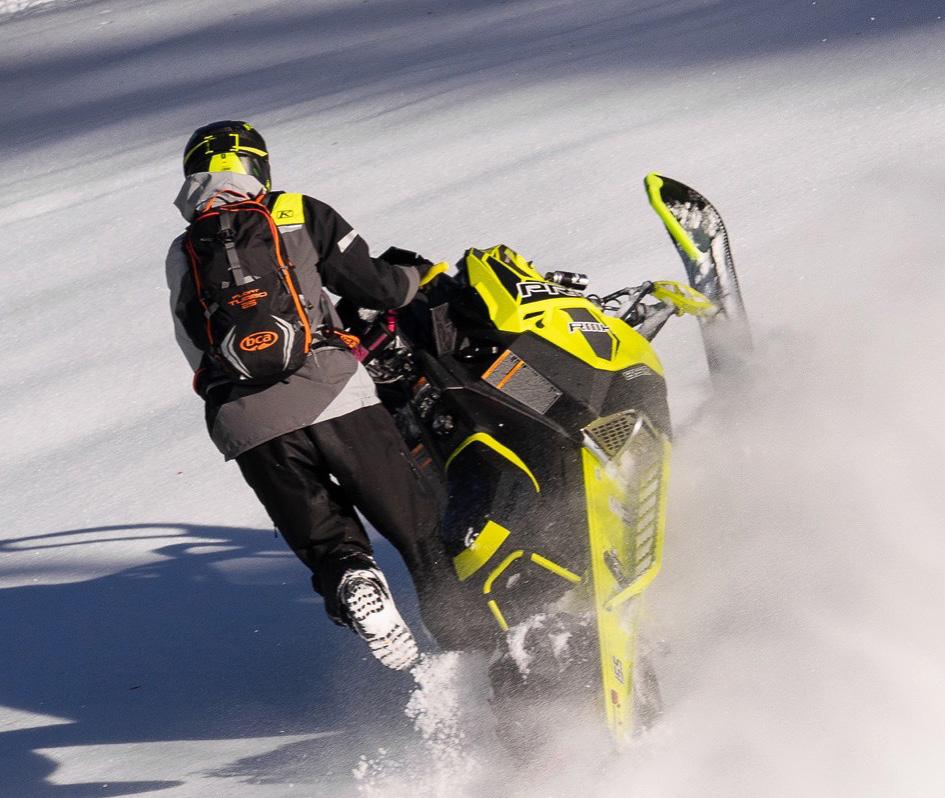


clutter on your screen or dial. This enables you to see the open gaps between stalks and beneath the canopy. This also enables you to see fish move through these open gaps. Because the signal is analog or broadband versus digital, you can also pick up movement easier.
To explain this, imagine you have a series of orange and yellow marks that rise ten feet off the bottom that indicate the weeds. Imagine that there are three gaps that are a foot to two feet within the marks indicating openings within the weeds. You can see your lure or fish in the open gaps. What the analog or broadband signal enables you to do is see fish where there are lines indicating weeds because the signal will flutter and often change color to a stronger signal. You can actually look into the weeds much better because the Vexilar is better at picking up movement.
Underwater cameras can also be useful for not only finding weeds but

getting a detailed picture of weeds and how fish are relating. There are times when you will see the fish with a camera but also look for cloudier water. If parts of the weed bed seem hazier where the visibility is greatly reduced, fish that spot because what I have found is that fish moving around in the weeds often creates that haze.
Learned a long time ago that you never say always or never with fishing but for finding crappies, a general rule of thumb is that the big crappies will be in the thick stuff during the day. Pike and bass populations often drive the panfish into hiding. The bigger panfish often seem to pick the best locations and the smaller fish get pushed out. If you are finding small bluegills in the area where you are fishing, keep exploring and find the spots within the area where there are thicker taller weeds.
There will often be clouds of small bluegills for example just hanging
around these weed locations but the slabs are ruling the roost occupying the absolute best hiding spots. If there aren’t the occasional pike, bass or musky patrolling this weed spot, that dynamic can change but predators have a big influence on panfish location on many lakes.
These locations are usually solid well through early ice to the point these weed spots are often still holding fish by the time we are driving vehicles out on the ice. On most lakes, as winter progresses… many crappies will pull out of the weeds and suspend over basins or holes through the middle of winter. Some winters are different however if we get a mild winter where we don’t get a lot of ice or snow, these weeds will remain up and green through the winter and continue to hold fish. Thick stands of tall weeds however are always a great starting point on many lakes across the Midwest at early ice. If these weeds are present, there are usually fish.







You’ve got your new Fish Trap and you can’t wait to get it home and put it together. We’ve all been there. The fun doesn’t stop once it’s built, though. Now comes the time to modify it, or “trick it out” to suit your style of fishing. For me, that’s almost as much fun as fishing out of it. It’s also a never-ending process for me. Every fishing trip, regardless of which of my Fish Traps I’m sitting in, I come up with new ideas for how to improve or change it in order to make using it more efficient. I know I’m not alone in this either. There are Facebook pages dedicated to portable fish house modifications and any online fishing forum you visit has a “trick your Trap” sub-forum somewhere within the ice fishing discussions. I’m always surprised, however, at the number of anglers that take a fairly lightweight, fairly manageable Fish Trap and modify it with so much plywood and carpeting that they now have to devise a winch system just to load it into their truck!!! Forget about trying to drag one of these behemoths through 6”
of fresh powder….these Traps are restricted to machine towing only! I’m here today to challenge you to re-consider how you go about tricking your next Trap. Try taking an ultralight approach. For every modification you are considering, ask yourself exactly how much weight you will be adding and then see if you can think of more lightweight alternatives that will accomplish the same thing.

One of the fastest ways to exponentially increase the weight of your Fish Trap is by adding plywood, which strangely enough seems to be the material of choice for most modifications. I can appreciate the desire to add organized individual compartments for everything, but I also like to be able to drag my Fish Trap through fresh snow or lift it into the bed of my pickup without putting myself into cardiac
arrest! There are lots of great ways to organize the interior of your Trap without adding much weight. Fabric is always a great choice and Clam has some great organizers and cargo nets that install very easily and take organization of your fish house to the next level. Clam also offers a variety of small plastic shelves, rod holders, metal battery brackets, etc., that mount easily and make organizing, securing and protecting your valuable gear a snap. One of my favorite organization hacks is to cut a sheet of foam building insulation to fit the floor of your Trap and then cut openings in the foam to hold your flasher, minnow bucket, propane tank or whatever else you want to carry inside in an organized and secure manner.
Don’t overlook 5-gallons buckets and/or milk crates as ways to organize your Fish Trap without adding all the weight of plywood. The really nice thing about using
crates and buckets is that they can be removed and reconfigured as your fishing system evolves. There are even taller and shorter variations of the 5-gallon bucket that let you get creative with nesting buckets to increase storage and organizational capabilities. Don’t limit yourself to the traditional round bucket either, because the rectangular kitty-litter buckets fit inside of a Fish Trap with very little wasted space due to their square corners. One of my favorite modifications using a 5-gallon bucket variant is in my Fish Trap Scout. I have removed the stock seating system and replaced it with a single 6-gallon bucket. This gives me a higher seat to sit on and allows me to put a smaller 2.5-gallon bucket in the top of the 6-gallon bucket. Not only does this give me a near-perfect sitting height, but it also allows me to keep my catch in the smaller top bucket and have dry storage in the bottom of the taller bucket. When I get home, I can simply lift out the smaller bucket to take to the cleaning station and
leave the larger bucket inside the Scout. Additionally, I have my Vexilar mounted to the taller bucket, so if I want to be SUPER-mobile, I can grab the handle of the taller bucket and move hole to hole with my seat, live well and some tackle in one hand and couple of rods in the other. Remember that foam in the bottom of the Fish Trap I mentioned earlier? In my Scout, I have a cut a circle in the foam to exactly the right diameter for that bucket, so I can put it back in exactly the right place every time and know that it will stay in place until I decide to lift it out once again.

Another very common cabinetlike modification I see is adding a plywood rod locker. Again, I can appreciate wanting to keep your rods organized, unbroken and tangle-free but there are ways to go about doing so without adding all the weight of a plywood rod locker. One of the most obvious is
to use a hard or soft-sided rod case. I actually prefer this over a built-in rod locker because not only does it preserve your expensive ice combos with a fraction of the weight, but I can also quickly remove all my rods from the fish house with a simple grab of the rod case and take them into the house or hotel with me so I can not only keep them warm overnight, but I can also re-tie new jogs for the next day and perform any kind of maintenance that needs done like cleaning, repairing reels, changing out rods and/or reels and respooling fresh line. With a builtin rod locker, it’s a major hassle to remove each rod, carry it into the house and then place them all back into the locker the next trip. Another option is the fabric hammocks that come in many models of Fish Trap. These hammocks are a great way to protect your rods and still allow quick and easy access to them as needed. Adding a sleeve to each rod or a “rod sock” will increase the level of protection and ensure they stay tangle free. I’ve heard a
few complaints that the hammocks are not big enough to hold very many rods, but I have no issues whatsoever fitting four to five fully rigged setups in my hammocks. Truthfully, if you need more room than that for your ice combos, you should probably reconsider how many rods you are bringing out with you onto the ice. Yet another option is to mount the rods to your tow vehicle rather that inside your Trap using the single or multiple rod holders that Clam offers. This is especially handy if you’re one of those ice anglers that like to fish off of your snowmobiles to ATV’s on those nice days or prefer to WEAR your fish house, in the form of Clam’s Ice Armor suits, rather than sit INSIDE a fish house.
Seating is another area where I see lots of modifications being made to Fish Traps. While I can appreciate the desire for a more comfortable seat, I also don’t relish the thought
of dragging the extra weight of a heavily padded seat meant for a boat through 6 inches of fresh snow. I would much rather go with a lighter, less padded seat and get up and move around when I begin to feel uncomfortable. I also find that a seat with good back support can do more to improve my comfort than any amount of padding. I have often been known to completely forego a seat in the interest of saving weight and using my trusty bucket as the seat instead.
These ideas are just the tip of the iceberg when it comes to ways to “Trick Your Trap” without “sinking your ship”. I believe if you honestly challenge yourself, you can come up with additional ways to lighten up any modifications you are considering. It may not seem like a big deal now, but after that first snowfall or mile-long hike onto the lake, you’ll definitely be thanking yourself. When it comes to tricking your Trap, ultralight is definitely the way to go!

EVERY FISHING TRIP, REGARDLESS OF WHICH OF MY FISH TRAPS I’M SITTING IN, I COME UP WITH NEW IDEAS FOR HOW TO IMPROVE OR CHANGE IT IN ORDER TO MAKE USING IT MORE EFFICIENT. I KNOW I’M NOT ALONE IN THIS EITHER. THERE ARE FACEBOOK PAGES DEDICATED TO PORTABLE FISH HOUSE MODIFICATIONS AND ANY ONLINE FISHING FORUM YOU VISIT HAS A “TRICK YOUR TRAP” SUB-FORUM SOMEWHERE WITHIN THE ICE FISHING DISCUSSIONS.

r l v n t . l i f e / i c e f i s h i n g


